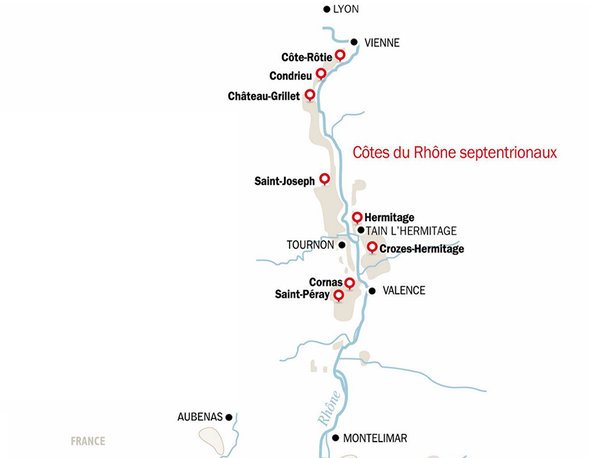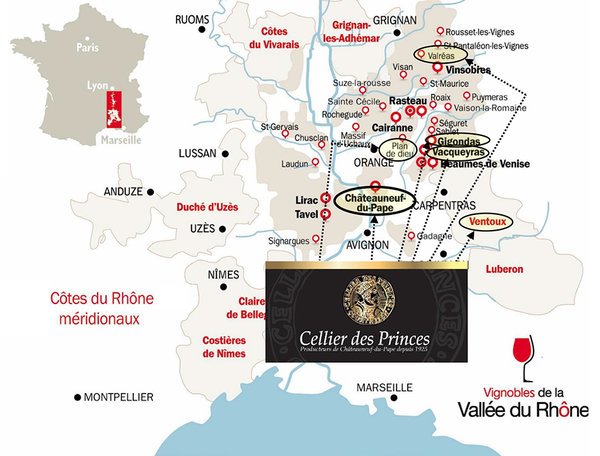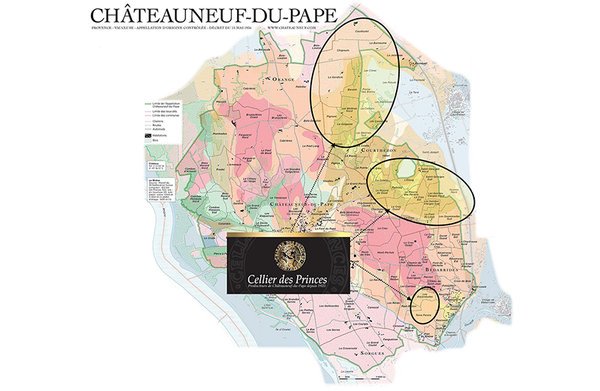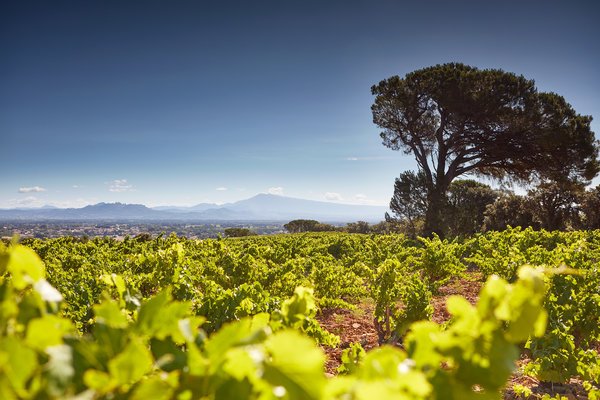Châteauneuf-du-Pape is a French wine Appellation d’origine contrôlée (AOC) located around the village of Châteauneuf-du-Pape in the Rhône wine region in southeastern France.
The future AOC system was initiated in 1923 in Châteauneuf-du-Pape for the 1st time. It was actually created by the Baron Pierre Le Roy de Boseaumarié with the organisation in charge of establishing and controlling the Protected Designation of Châteauneuf du Pape.
On 15 May 1936, French President Albert Lebrun signed the decrees of the first AOC in France, Châteauneuf-du-Pape.
Pearched on a 120 meters high hill, Châteauneuf-du-Pape stands proud and erects in the heart of the plain of Comtat Venaissin. The village is located halfway between the two prestigious cities of Orange and Avignon, in the Vaucluse department. The nearby left bank of the Rhône river is a reminiscent of its common History with the local vineyard.
Thousands of years ago, the inland seas of the secondary and tertiary eras successively formed different sediment layers from which stems the subsoil of the existing vineyard. Due to the glaciation of the quaternary era, the Rhône river became extremely powerful to such an extent that it smashed everything in its path such as rocks coming from the mountain sides of the French Alps. Those stones eroded over the time and deposited in calmer places of the river as in Châteauneuf du Pape.
The characteristic terroir of Châteauneuf-du-Pape comes from a layer of stones called galets roulés (“round pebbles”). The large pebbles contribute to the quality of the vines and grapes by storing heat during the day and holding water.The stones release the heat at night which helps to obtain an optimal ripeness.
In 1305 Clement V became the new Pope but he declined to move to Rome, remaining in France, and in 1309, he moved his court to the papal enclave at Avignon where Châteauneuf du Pape started to get a world exposure.
Under the papacy of Clement VI, in 1344, was registered the first Terroir of Châteauneuf du Pape.
The vineyards includes today 3200 hectares of vines spread on 5 Villages : Châteauneuf du Pape, Courthézon, Bédarrides, Orange and Sorgues.
Specialized producer of Châteauneuf-du-Pape, AOC Côtes-du-Rhône & Côtes-du-Rhône Villages, IGP Vaucluse, Varietal wines, we also offer Vacqueyras and Gigondas

We cover all the terroirs of Châteauneuf-du-Pape thanks to our presence in the 5 villages of the AOP :


If Cellier des Princes has a presence on every terroir of Châteauneuf-du-Pape, we cover mostly the East of the appelation, meaning the very qualitative terroirs of sandy soils and round pebbles, the village of Courthezon in majority, and then Bédarrides and Sorgues.
Our vines are planted on various soils : thick layers of rolled pebbles for concentration, hot and dry sandy rocks for body and spice, limestones for the structure and silicious hills for the character = large and diversified range of Chateauneuf du Pape
Our producers own vineyards of Châteauneuf-du-Pape and Côtes-du-Rhône at the same time, very often side-by-side. For that reason, most of our Côtes-du-Rhône are hand-harvested by the same team of harvesters = Optimized quality in Côtes-du-Rhône
Our 3 dominant grape varieties are GRENACHE, SYRAH and MOURVEDRE. Grenache remains however the main grape as it represents between 90% and 95% of our blends. We have then Syrah and Mourvèdre.
Grenache brings roundness, ampleness and elegance. It is a generous grape : its tannins mellow with age, to reveal delicious fruit flavours, such as strawberry and also notes of garrigue and mediterrannean spices such as thyme and rosemary …
Our Syrah bring freshness, acidity, peppery notes and floral notes such as violet. Our Mourvèdre bring structure, as well as balance.
One of the golden rules guaranteeing the quality of Châteauneuf-du-Pape wines, is the selective sorting, during which we keep only the most qualitative berries. Precious grape giving a precious wine.
The Vineyard of Cellier des Prince is characterized by a great proximity between our Châteauneuf-du-Pape vineyards and our Côtes-du-Rhône/Côtes-du-Rhône Villages vineyards.

All our wines come from exceptional terroirs, either our Châteauneuf-du-Pape, our Ventoux, our IGP Vaucluse, our Côtes-du-Rhône, our Côtes-du-Rhône Villages Valréas & Plan de Dieu, or our Vacqueyras and Gigondas.
The meticulous work from our winegrowers, our complex and diversified soils, the optimal exposure of our vineyards as well as the age of our vines are the key factors making our terroir exceptional.